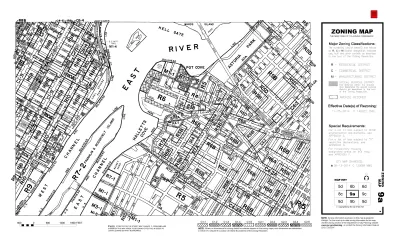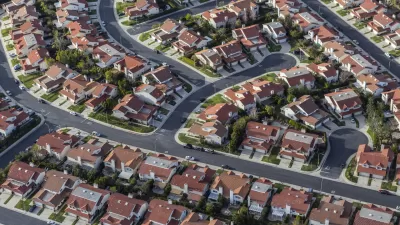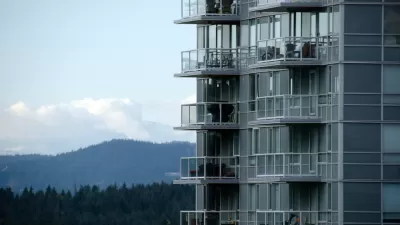An editorial in the New York Times argues that exclusionary zoning reinforces segregation and must be curbed.

Richard D. Kahlenberg sees segregation written into the zoning laws of American cities and towns. Even though racial segregation laws have been struck down by the Supreme Court, exclusionary zoning endures, and that zoning, Kahlenberg argues, is fueling segregation.
"The Supreme Court’s comparative willingness to tolerate explicit economic discrimination is mirrored in American public policy," Kahlenberg argues. These laws and policies have ensured that, while racial segregation has decreased, class segregation has increased. "Exclusionary zoning frustrates the Fair Housing Act’s aim by erecting barriers that exclude millions of low-income African-Americans and Latinos from wealthier white communities," Kahlenberg writes.
Kahlenberg sees a solution in a curb on the extent of zoning, either with an outright ban or a punitive action. "If we can’t achieve a ban, we should assess a penalty on municipalities that engage in discriminatory zoning, either by withholding infrastructure funds or limiting the tax deduction that homeowners in those towns can take for mortgage interest," he writes.
FULL STORY: The Walls We Won’t Tear Down

Alabama: Trump Terminates Settlements for Black Communities Harmed By Raw Sewage
Trump deemed the landmark civil rights agreement “illegal DEI and environmental justice policy.”

Study: Maui’s Plan to Convert Vacation Rentals to Long-Term Housing Could Cause Nearly $1 Billion Economic Loss
The plan would reduce visitor accommodation by 25% resulting in 1,900 jobs lost.

Planetizen Federal Action Tracker
A weekly monitor of how Trump’s orders and actions are impacting planners and planning in America.

Wind Energy on the Rise Despite Federal Policy Reversal
The Trump administration is revoking federal support for renewable energy, but demand for new projects continues unabated.

Passengers Flock to Caltrain After Electrification
The new electric trains are running faster and more reliably, leading to strong ridership growth on the Bay Area rail system.

Texas Churches Rally Behind ‘Yes in God’s Back Yard’ Legislation
Religious leaders want the state to reduce zoning regulations to streamline leasing church-owned land to housing developers.
Urban Design for Planners 1: Software Tools
This six-course series explores essential urban design concepts using open source software and equips planners with the tools they need to participate fully in the urban design process.
Planning for Universal Design
Learn the tools for implementing Universal Design in planning regulations.
Caltrans
Smith Gee Studio
Institute for Housing and Urban Development Studies (IHS)
City of Grandview
Harvard GSD Executive Education
Toledo-Lucas County Plan Commissions
Salt Lake City
NYU Wagner Graduate School of Public Service





























